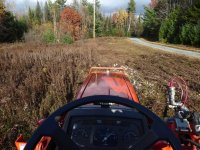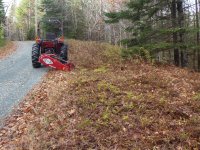Boeing
Platinum Member
Guys, I have an older Kubota L-3010. It has a FEL but no hyd to the rear. I want to buy a 3 PT sickle bar (PTO driven) but need hyd to raise/lower the cutter. AS I RECALL.....bad word....there are a couple of "capped" hydraulic outlets on the R side hanging below the FEL quick disconnects. Can I get hyd lines made up and use these quick disconnects? I read that I could DIS CONNECT the FEL and use it's lever to actuate the cutter. Good idea?????
Thanks, R
Thanks, R


